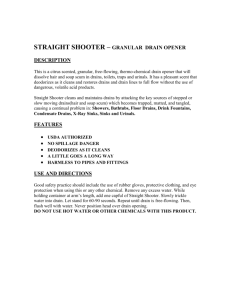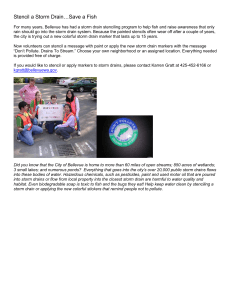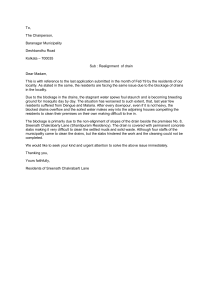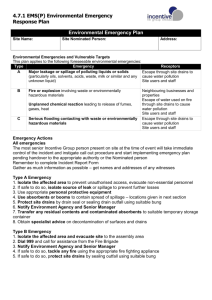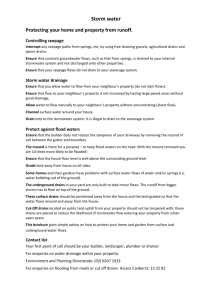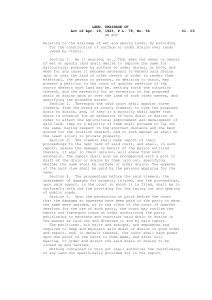Unit 1 (Chapter 3) Review
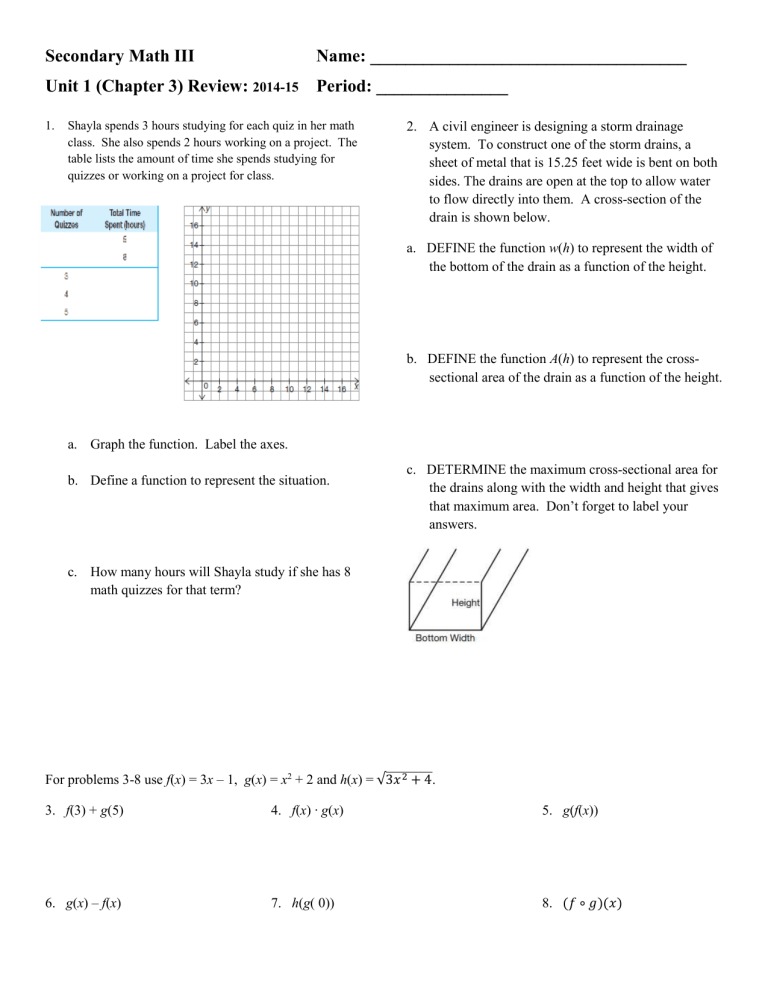
Secondary Math III Name: ____________________________________
Unit 1 (Chapter 3) Review: 2014-15 Period: _______________
1.
Shayla spends 3 hours studying for each quiz in her math class. She also spends 2 hours working on a project. The table lists the amount of time she spends studying for quizzes or working on a project for class.
2.
3.
4.
5.
6.
7.
8.
a.
Graph the function. Label the axes. b.
Define a function to represent the situation. c.
How many hours will Shayla study if she has 8 math quizzes for that term?
For problems 3-8 use f ( x ) = 3 x – 1, g ( x ) = x 2 + 2 and h ( x ) = √3𝑥 2 + 4 .
3. f (3) + g (5) 4. f ( x
) ∙ g ( x )
6. g ( x ) – f ( x ) 7. h ( g ( 0))
2. A civil engineer is designing a storm drainage system. To construct one of the storm drains, a sheet of metal that is 15.25 feet wide is bent on both sides. The drains are open at the top to allow water to flow directly into them. A cross-section of the drain is shown below. a. DEFINE the function w ( h ) to represent the width of the bottom of the drain as a function of the height. b. DEFINE the function A ( h ) to represent the crosssectional area of the drain as a function of the height. c. DETERMINE the maximum cross-sectional area for the drains along with the width and height that gives that maximum area. Don’t forget to label your answers.
5.
8. g ( f ( x ))
(𝑓 ∘ 𝑔)(𝑥)
9. Consider the graphs of the functions f ( x ) and g ( x ). Determine each value. b. f ( g (0)) a. f (-2) c. g ( f (3)) d. ( fg )(-4)
10. Analyze the graphs of f ( x ) and g ( x ). Then sketch the graphs of h ( x ), m ( x ), and j ( x ) on the same coordinate system.
Clearly label each function. a.
h ( x ) = f ( x
) ∙ g ( x ) b.
m ( x ) = f ( x ) + g ( x ) c.
j ( x ) = g ( x ) – f ( x )
11. If f ( x ) is a linear function and g ( x ) is a quadratic function, to which function family does each of the following belong?
Explain your answers. a. f ( x ) + g ( x ) b. f ( x ) – g ( x ) c. f ( x ) ∙ g ( x )
12. D etermine whether the expressions are equivalent (without a calculator!). SHOW ALL WORK by simplifying the expressions. DO NOT merely plug in a random number.
a. (7𝑥 4 + 1) − (3𝑥 2 − 1)(𝑥 2 + 4) and 2𝑥 2 (𝑥 2 − 3) + 2𝑥 4 − 5𝑥 2 + 5 b. 8𝑥(2𝑥 + 1) + 8𝑥 2 and 8𝑥(3𝑥 + 1)



